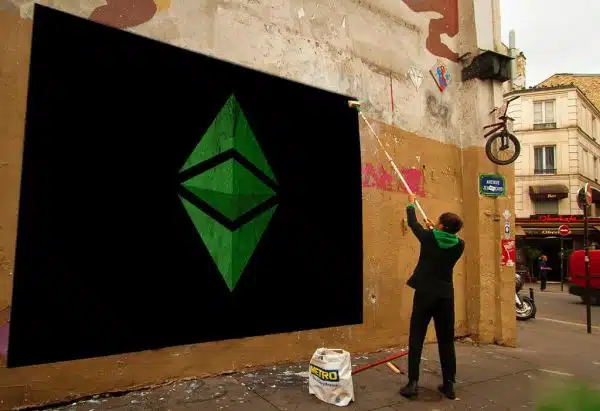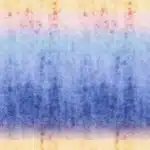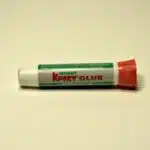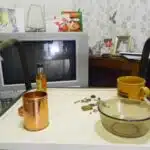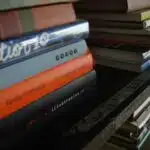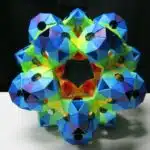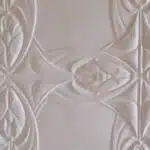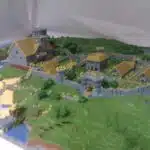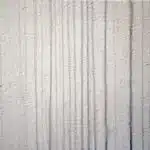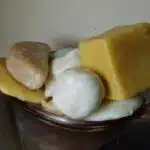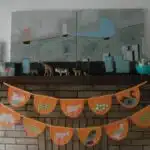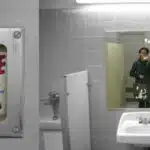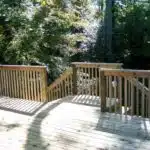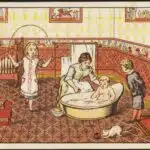Removing wallpaper glue can be a daunting task for many homeowners. Whether you’re renovating your home or simply looking to update your walls, the process of getting rid of old wallpaper and its adhesive residue can be challenging and time-consuming. However, with the right tools and techniques, removing wallpaper glue is a relatively simple DIY project that can be tackled by anyone.
As a professional in the wallpaper removal industry, I have seen countless homeowners struggle with this task. In this article, I will provide you with a comprehensive guide on how to remove wallpaper glue effectively and efficiently. From understanding the different types of adhesive to using the right tools and materials, my goal is to equip you with all the information you need to make your wallpaper removal project a success. So let’s get started!
Understanding Wallpaper Adhesive
Wallpaper adhesive, also known as wallpaper glue, is a necessary component in the process of wallpapering. It is what holds the wallpaper onto the wall and keeps it from peeling or falling off. Understanding wallpaper adhesives is crucial to ensure a successful wallpaper project.
There are two main types of wallpaper adhesive: traditional and pre-mixed. Traditional adhesive requires mixing with water before use, while pre-mixed adhesive comes ready to use straight out of the container. The properties of each type vary depending on the brand and formulation, but they generally have similar characteristics such as being non-toxic, easy to clean up with water, and suitable for most types of wallpapers.
When choosing the right adhesive for your wallpaper project, consider several factors such as the type of wallpaper you will be using, the condition of your walls, and humidity levels in your area. Some adhesives are more durable than others and can withstand high humidity levels better. Additionally, some adhesives work better on certain surfaces than others. It is recommended to read the manufacturer’s instructions carefully before purchasing an adhesive to ensure it is suitable for your specific project needs.
Understanding the different types and properties of wallpaper adhesives will help you choose the best one for your project needs. Once you have selected an appropriate adhesive, it’s time to prepare your workspace for removing old wallpaper and applying a new one.
Preparing Your Workspace
Setting up your workspace is an essential first step when preparing to remove wallpaper glue. Before you begin, make sure you have cleared the area of any furniture or other obstructions that may impede your progress. This will help ensure that you have enough space to move freely and safely around the room.
In addition to clearing the area, it’s important to take certain safety precautions when removing wallpaper glue. Always wear gloves and eye protection to prevent any potential injuries from chemicals or tools used during the process. It’s also a good idea to wear old clothing that you don’t mind getting dirty or damaged.
Once you have set up your workspace and taken all necessary safety precautions, it’s time to gather the necessary tools and materials for removing wallpaper glue. These include a wallpaper scraper, spray bottle filled with warm water, sponge, bucket, adhesive remover solution, and rags or towels for cleaning up any excess glue residue. By having these items on hand before beginning the removal process, you can work efficiently and effectively towards achieving a smooth surface for new wallpaper application.
Gathering Necessary Tools And Materials
When it comes to removing wallpaper glue, gathering the necessary tools and materials is crucial. One of the first things you’ll need to do is choose the right type of adhesive remover. There are a variety of products on the market designed specifically for removing wallpaper glue, including solvents, gels, and sprays. Be sure to read the labels carefully and choose a product that’s appropriate for your specific situation.
In addition to adhesive remover, you’ll also need a few basic tools. A scraper or putty knife will come in handy for loosening and removing the wallpaper, while a spray bottle filled with warm water can help soften stubborn glue. You may also want to invest in a wallpaper scoring tool, which will create small perforations in the paper that allow the adhesive remover to penetrate more deeply.
Before you get started, it’s important to take some safety precautions. Many adhesive removers contain harsh chemicals that can be harmful if ingested or inhaled. Be sure to wear protective gloves and eyewear when working with these products, and keep them out of reach of children and pets. Additionally, make sure your work area is well-ventilated by opening windows or using fans to circulate air. By taking these steps before beginning your project, you’ll help ensure a safe and successful outcome.
Moving forward with protecting your floors and furniture during this process…
Protecting Your Floors And Furniture
When it comes to removing wallpaper, protecting your floors and furniture is just as important as removing the wallpaper itself. One of the most common mistakes people make during this process is not taking the necessary precautions to prevent damage or scratches to their surfaces.
To protect your floors, start by covering them with a drop cloth or protective plastic sheeting. This will prevent any excess glue or water from seeping through and damaging your flooring. Additionally, if you’re working with hardwood floors, consider placing felt pads under any furniture that needs to be moved around during the removal process. This will prevent scratches and other damage caused by sliding furniture across the floor.
When it comes to protecting your furniture, there are several steps you can take. First, cover any exposed surfaces with plastic sheeting or old towels. This will prevent any stray drops of water or glue from damaging your furniture’s finish. Secondly, if possible, move any furniture out of the room entirely to avoid accidental damage during the removal process.
With these simple steps in mind, you can easily protect both your floors and furniture during the wallpaper removal process. By taking the time to properly prepare your space before beginning this project, you’ll be able to avoid costly repairs and ensure a successful outcome for all involved. With these precautions in place, it’s time to move on to the next step: removing wallpaper without causing any unnecessary damage or mess.
Removing Wallpaper
As a wallpaper removal expert, there are several methods to get rid of the adhesive residue left behind after removing old wallpaper. One of the most effective ways is by using steam. Steam helps soften the glue, making it easier to scrape off with a putty knife or scraper. To use this technique, rent or buy a wallpaper steamer from your local hardware store and follow the manufacturer’s instructions carefully.
Another great way to remove wallpaper glue is by using some clever wallpaper removal hacks. One such hack involves mixing equal parts of warm water and vinegar and applying it to the affected area with a sponge or spray bottle. Let it sit for 5-10 minutes before scraping off the residue with a scraper. Alternatively, you can mix warm water with fabric softener and apply it in the same manner for similar results.
When removing wallpaper glue, it’s important not to rush the process as doing so may damage your walls. Take your time and be patient while employing these techniques. In the next section, we will discuss how soaking the wallpaper can also aid in removing stubborn adhesive residue left behind after taking down old wallpaper.
Soaking The Wallpaper
- Prior to removal of wallpaper, it is essential to prepare the room by removing all furniture, window treatments, and any other items that may impede the process.
- After the room has been prepped, the wallpaper should be thoroughly soaked with a mixture of warm water and fabric softener, using a sponge or a spray bottle to saturate the wallpaper.
- The wallpaper should be allowed to soak for a minimum of thirty minutes before attempting to remove it.
- During the soaking process, it is important to ensure that the wallpaper is not saturated to the point that it begins to break down and disintegrate.
Preparing The Room
When it comes to removing wallpaper glue, the first step is to prepare the room. This means choosing paint colors and creating a workspace that is clean and organized. Before beginning the removal process, it’s important to ensure that all furniture is moved out of the room or covered with drop cloths to protect from any potential damage.
To create an ideal workspace for removing wallpaper glue, start by setting up a table or workbench near an electrical outlet. This will allow you to plug in any necessary tools such as a wallpaper steamer or scraper. Additionally, you should have plenty of space for all of your supplies including buckets, sponges, and cleaning solutions.
When choosing paint colors for your newly stripped walls, consider neutral shades that will complement any decor style. This will give you flexibility when it comes time to redecorate. By taking the time to properly prepare the room before soaking the wallpaper, you can ensure a successful removal process without any unnecessary stress or complications.
Soaking The Wallpaper
When it comes to removing wallpaper, soaking the wallpaper is one of the most effective methods. Soaking the wallpaper helps to dissolve the glue and make it easier to remove. There are various alternatives to soaking wallpaper, but this method is widely preferred due to its effectiveness.
Before soaking the wallpaper, it’s important to take safety precautions. This involves turning off all electrical outlets in the room and wearing protective gear such as gloves and goggles. The next step is to score the wallpaper using a scoring tool. This helps to create perforations in the wallpaper, allowing water or steam to penetrate through.
Once you have scored the wallpaper, you can proceed with soaking it. You can use either hot water or a commercial stripper solution for this process. It’s important not to oversaturate the walls with water as this can cause damage to drywall or plaster underneath. Allow enough time for the water or solution to soak into the wallpaper before attempting to scrape it off. By following these steps carefully, you can ensure that your wallpaper removal process is successful without any unnecessary complications.
Scoring The Wallpaper
After soaking the wallpaper, it’s time to remove the glue. This is an important step in wallpaper removal that requires a bit of patience and elbow grease. Before starting, make sure you have all the necessary tools, including a scraper, bucket of warm water, sponge, and possibly some adhesive remover.
To begin, use a scraper to gently scrape away any loose or peeling wallpaper. Be careful not to gouge or damage the wall underneath. Then, dip your sponge into the warm water and start wiping down the walls. You may need to apply a bit of pressure to get the glue residue off completely. If you encounter stubborn spots, try using an adhesive remover according to the manufacturer’s instructions.
Once you have removed all of the glue residue, use a clean sponge and fresh water to rinse off any remaining residue. Then let the walls dry completely before moving on to scoring or sanding if necessary. With these steps completed successfully, your DIY home improvement project will be one step closer to completion.
Transition: Now that we have successfully removed most of the glue from our walls after soaking them in hot water for some time, it’s now time to move onto scoring the wallpaper.
Scraping The Wallpaper
As you start scraping the wallpaper, it is essential to have the right tools for the job. These tools include a scraper, a putty knife, and a scoring tool. The scraper removes large sections of wallpaper while the putty knife helps with stubborn areas that require more force to remove. The scoring tool creates small holes in the wallpaper that allow water or steam to penetrate beneath the adhesive.
If you do not have access to these tools, alternative methods exist for scraping off wallpaper. One option is using sandpaper or an electric sander to remove the top layer of wallpaper and glue. Another method is using hot water mixed with fabric softener and spraying it on the walls before scraping off the wallpaper.
When removing wallpaper glue, dealing with stubborn adhesive can be frustrating. However, there are ways to tackle this issue effectively. In the subsequent section, we will discuss how to deal with adhesive residue left behind after removing the wallpaper.
Dealing With Stubborn Adhesive
Once the wallpaper is removed, the next step is to deal with stubborn adhesive residue that remains on the wall. This can be a tricky process, but there are several methods to remove it effectively. One of the most common and easiest ways is using warm water and a scraper tool. Simply soak a sponge in warm water and apply it to the glue residue for a few minutes until it softens. Then, use a scraper tool to gently remove the glue from the wall.
If warm water doesn’t work, there are alternative methods that can be used to remove stubborn wallpaper glue residue. One of these methods is using vinegar mixed with warm water. This solution can dissolve tough adhesives and make them easier to remove. Another alternative method is using fabric softener mixed with hot water. The fabric softener will soften the adhesive, making it easier to scrape off.
Removing residue can be time-consuming, so if you’re looking for a quicker solution, chemical solutions are also available in hardware stores. These solutions contain powerful chemicals that break down the adhesive quickly and efficiently. However, they should be used with caution as they might damage your walls or pose health risks if not handled properly. It’s important to follow instructions carefully when using chemical solutions to ensure your safety and protect your walls from damage.
Transitioning into using chemical solutions: While some prefer natural remedies for removing stubborn wallpaper glue residue, others may find that using chemical solutions is more efficient. If you decide to go this route, there are several steps you should take before applying any chemicals onto your walls to ensure their safety and prevent any adverse effects on your health or home environment.
Using Chemical Solutions
When removing wallpaper glue, the type of chemicals used is of utmost importance. Different chemical solutions have different active ingredients that may be more effective in certain circumstances. It is important to select the right chemical solution for the job and to follow manufacturer’s instructions for safe and effective use. Applying the chemical solution correctly is also paramount for successful removal of wallpaper glue.
Choosing Chemicals
When it comes to removing wallpaper glue, the use of chemical solutions is one of the most effective and efficient methods. However, choosing the right chemicals for the job is crucial not only for its effectiveness but also for chemical safety. As a wallpaper removal expert, it is important to consider various factors when selecting chemical solutions.
Firstly, it is necessary to consider chemical safety. Some chemicals can be harmful when inhaled or come into contact with skin, eyes, or clothing. Therefore, it is essential to choose a product that has clear instructions on how to handle it safely. Eco-friendly options are also available as they contain fewer harmful chemicals and do not harm the environment.
Secondly, take into account the type of wallpaper glue and surface you are working on. Different types of wallpaper glue require different types of chemicals for effective removal. For example, some adhesives may contain oil-based compounds which require stronger solvents compared to water-based adhesives. The type of surface being worked on should also be considered since some surfaces may be more delicate than others and may require milder chemicals.
Lastly, always read product labels carefully before using any chemical solution. This will ensure that you understand how to handle them safely and effectively. Additionally, follow all instructions precisely and wear protective gear such as gloves and goggles when handling hazardous products.
In conclusion, choosing the right chemicals for removing wallpaper glue requires careful consideration of chemical safety, eco-friendly options, type of adhesive and surface being worked on. As a professional in this field, always prioritize safety by reading labels carefully and following instructions precisely while wearing protective gear.
Applying Solutions
When using chemical solutions for wallpaper removal, it is important to know the proper way of applying them. One alternative to chemicals is using heat to loosen up the adhesive. However, this method may not be as effective and efficient compared to using chemical solutions.
To apply chemical solutions, start by preparing the area by covering the floor with plastic or newspapers. Next, mix the solution according to the instructions provided in a clean bucket. Soak a sponge or cloth with the solution and apply it generously on the wallpaper surface. Make sure that every inch of the surface is covered with the solution and let it sit for a few minutes before scraping off.
It is essential to work in small sections at a time to prevent drying out of the solution. After scraping off one section, wipe it down with a damp cloth and move on to another section until all parts are covered. Lastly, rinse off any leftover residue with water and let it dry completely before applying new wallpaper or paint. With proper application techniques, using chemical solutions can make wallpaper removal quick and easy while maintaining safety standards.
Cleaning Up The Workspace
Using chemical solutions to remove wallpaper glue is an effective method, but it’s crucial to clean up the workspace after finishing. Begin by organizing supplies by putting everything in its place and throwing away any waste. Ensure that there are no distractions around, such as phones or televisions, which may interfere with concentration.
To start removing wallpaper glue, mix warm water and dishwashing detergent in a spray bottle, then apply the solution on the wall. Allow it to sit for 15-20 minutes before using a scraper to peel off the wallpaper gently. If there are stubborn spots left behind, use a wallpaper remover tool with a sharp blade to scrape them off.
Minimizing distractions is essential when removing wallpaper glue because mistakes can happen if not careful. Additionally, it’s essential to wear protective gear like gloves and goggles when handling chemicals or cutting tools. After completing the task, dispose of any materials used responsibly and clean up the workspace thoroughly.
Now that you have removed the wallpaper glue successfully, it’s time to move on to sanding and smoothing the walls. But before doing so, ensure that all necessary supplies are ready and organized for easy access.
Sanding And Smoothing The Walls
Sanding the walls is a necessary step in the wallpaper removal process. Smoothing the walls after sanding helps to create a clean and even surface. Preparing the walls for wallpaper removal includes masking off any adjacent surfaces and priming the walls. Chemical removers, TSP solutions, sponges, scrapers, sandpaper, and a sander are all tools that can be used to remove wallpaper glue.
Sanding
When it comes to removing wallpaper glue, sanding is a crucial step in ensuring that the walls are smooth and ready for further treatment. Sanding involves using sandpaper to remove any bumps or rough patches on the wall surface. This process not only helps in creating an even surface for painting or applying new wallpaper but also assists in making drywall repair easier.
Before starting the sanding process, ensure that any leftover adhesive residue is removed from the wall surface. Cleaning the walls with warm water and soap can help eliminate any traces of glue. Once you have cleaned the area, use a fine grit sandpaper to begin sanding the walls gently. Remember to wear protective gear such as gloves and goggles while doing this as it can be messy work.
After completing the sanding process, it’s essential to prime your walls before painting or applying new wallpaper. Priming helps create a base layer that will make it easier for paint or wallpaper adhesive to stick onto your wall’s surface. Additionally, priming ensures that any remaining glue residue is sealed off and won’t affect your new wall covering material. So, if you want to achieve flawless walls after removing wallpaper glue, don’t skip out on priming your walls!
Smoothing
When it comes to wallpaper removal, sanding is an essential step in ensuring that your walls are smooth and ready for further treatment. However, sanding alone cannot guarantee a perfectly flat surface. That’s where smoothing comes in. Smoothing refers to the process of filling in any remaining imperfections on your wall surface, such as scratches or dents.
To achieve a smoother wall surface, you can use various techniques and materials. One of the most popular methods is skim-coating with joint compound. This involves applying a thin layer of joint compound over the entire wall surface using a trowel or putty knife. Once dry, you can then sand the wall again to create a smooth finish.
Other wallpaper removal hacks for smoothing include using spackle or drywall mud to fill in any gaps or holes on the wall surface. You can also try sanding with a finer grit sandpaper after completing the initial sanding process for added smoothness. With these DIY wallpaper removal tips, you’ll be able to achieve professional-looking walls without breaking the bank.
By incorporating both sanding and smoothing techniques into your wallpaper removal process, you can ensure that your walls are not only free from adhesive residue but also perfectly smooth and ready for painting or new wallpaper installation. So don’t forget to take the time to smooth out any remaining imperfections before moving on to your next step!
Applying New Wallpaper Or Paint
Imagine you have finally removed all the old wallpaper glue from your walls. The feeling of accomplishment is unmatched as you visualize the fresh start you can now give your room. The possibilities are endless, whether it be a bold, patterned wallpaper or a coat of paint to brighten up the space. But where do you even begin? Let’s dive into some tips for choosing wallpaper and painting techniques.
When it comes to choosing wallpaper, it’s important to consider the overall aesthetic of the room and what will complement it best. Do you want a statement wall or an all-over pattern? Will it clash with your furniture or blend seamlessly? Take samples home and see how they look in different lighting throughout the day. If you’re unsure, neutral colors and subtle patterns are always a safe bet.
Painting can be just as daunting, but there are a few techniques that can make the process smoother. First and foremost, invest in quality supplies – from brushes to rollers – to ensure a smooth finish. Secondly, use painter’s tape to protect areas that won’t be painted, such as baseboards and trim. And lastly, don’t rush! Allow each coat of paint to dry completely before adding another layer for optimal results.
| Wallpaper | Painting |
|---|---|
| Consider overall aesthetic of room | Invest in quality supplies |
| Choose between statement wall or all-over pattern | Use painter’s tape for protection |
| Neutral colors and subtle patterns are safe options | Allow each coat to dry completely before adding another layer |
Now armed with these tips for success in choosing wallpaper and painting techniques, let’s move on to some additional pointers for creating a flawless finished product.
Tips For Success
After you have removed the wallpaper, you may find that there is still a stubborn layer of glue that remains on the wall. This can be frustrating and time-consuming to remove, but with the right techniques, it can be done effectively. One common mistake that people make is trying to scrape off the glue with a sharp tool, such as a putty knife. This can damage the wall surface and create an uneven finish. Instead, use a gentle solvent or steam to loosen the glue.
If you are using a solvent, make sure to choose one that is safe for your walls and follow the manufacturer’s instructions carefully. Apply the solvent generously to the glue and let it sit for several minutes to soften it. Then use a scraper or sponge to gently remove the glue. If you prefer not to use chemicals, you can try using steam instead. A wallpaper steamer will work best for this method, but if you don’t have one, you can also use a clothes steamer or iron with a steaming function.
Troubleshooting techniques include being patient and persistent when removing wallpaper glue. Depending on how much glue there is and how old it is, it may take several attempts before all of it is removed. Be careful not to damage the wall by scraping too hard or using abrasive tools. If you encounter particularly stubborn spots of glue, try applying more solvent or steam and letting it sit longer before attempting to remove it again. With some effort and perseverance, you can successfully remove all traces of wallpaper glue from your walls.
Moving on to frequently asked questions about wallpaper removal…
Frequently Asked Questions
A sticky and stubborn wallpaper glue can be a pain to remove. But, fret not! With proper techniques and some elbow grease, you’ll be able to get rid of it in no time. Removing wallpaper glue can be an arduous task, but the end result is worth the effort.
One effective way to remove wallpaper glue is by using wallpaper glue alternatives. These alternatives are typically solvent-based and will dissolve the glue making it easier to scrape off. However, be cautious when using these solvents as they may damage your walls if not used correctly. It’s essential to follow the instructions carefully and wear protective gear such as gloves and goggles.
Preventing wallpaper glue residue is better than dealing with its aftermath. When applying new wallpaper, ensure that the walls are clean and dry before attaching them. Additionally, make use of a primer or sealer on the walls before installing new wallpaper; this helps prevent future residue from sticking to your walls. Lastly, if you’re removing old wallpaper that has been painted over, use a scoring tool or sandpaper to roughen up the surface before applying any solvents or removers.
- Always have an ample supply of paper towels or rags when working with wallpapers.
- Use warm water mixed with dish soap for cleaning up excess glue.
- When using any solvents or removers, ensure proper ventilation in the room.
As a professional in removing wallpapers for years now, I understand how frustrating it can be to deal with stubborn wallpaper glues that won’t budge quickly. However, with patience and perseverance, it’s possible to get rid of them without damaging your walls. Remember always to take precautions by wearing protective gear when necessary and follow instructions carefully.
Removing wallpaper glue is just one aspect of wall preparations necessary for installing new wallpapers properly. Investing time into this stage saves money in repairs down the line and ensures you have smooth surfaces free from bumps or peeling paint beneath your new wallpaper.
Conclusion
Wallpaper removal can be a daunting task, especially when it comes to removing the glue residue. However, with the right tools and techniques, it can be achieved with ease. Understanding the type of adhesive used is essential in determining the best approach for removal.
Before starting, ensure you have all the necessary tools and materials, including a wallpaper scraper, hot water, vinegar or fabric softener solution, and sandpaper. Protect your floors and furniture with drop cloths or plastic sheets.
To remove wallpaper glue residue, begin by scraping off as much of the adhesive as possible using a wallpaper scraper. Apply a solution of hot water and vinegar or fabric softener to soften any remaining glue. Use sandpaper to smooth out any rough patches on the wall before applying new wallpaper or paint.
Successful wallpaper removal requires patience and attention to detail. By following these steps and tips for success, you can achieve a professional-looking finish that will leave your walls looking brand new.
In conclusion, removing wallpaper glue can seem like an overwhelming task but with perseverance and proper techniques, it can be accomplished efficiently. It may take time but once completed successfully, it can evoke feelings of pride in your home improvement abilities. As an experienced wallpaper removal expert who has helped countless homeowners achieve their desired results over the years, I encourage anyone tackling this project to remain patient throughout the process while keeping an eye on achieving their ultimate goal – beautiful walls that reflect their style!
Image Credits
- “ETC Wallpaper – Banner Glue” by EthereumClassic (featured)

